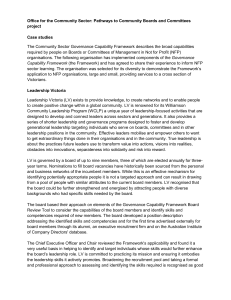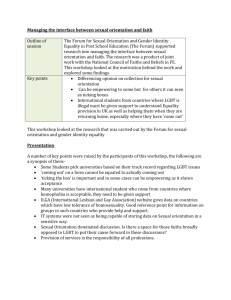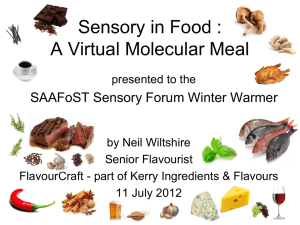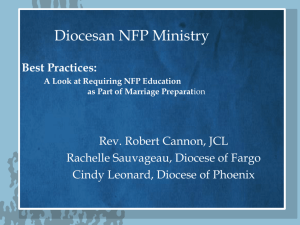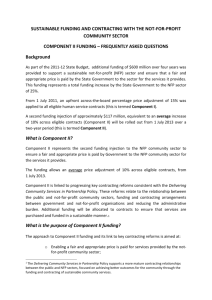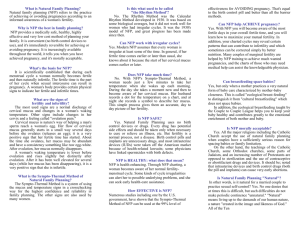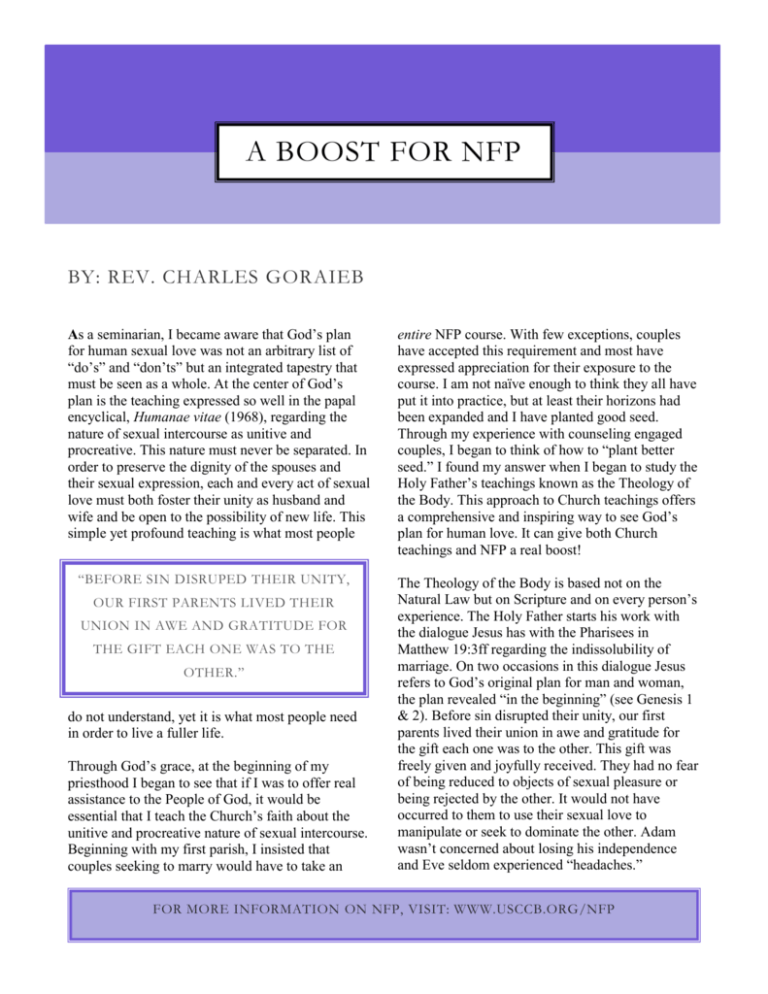
A BOOST FOR NFP
BY: REV. CHARLES GORAIEB
As a seminarian, I became aware that God’s plan
for human sexual love was not an arbitrary list of
“do’s” and “don’ts” but an integrated tapestry that
must be seen as a whole. At the center of God’s
plan is the teaching expressed so well in the papal
encyclical, Humanae vitae (1968), regarding the
nature of sexual intercourse as unitive and
procreative. This nature must never be separated. In
order to preserve the dignity of the spouses and
their sexual expression, each and every act of sexual
love must both foster their unity as husband and
wife and be open to the possibility of new life. This
simple yet profound teaching is what most people
“BEFORE SIN DISRUPED THEIR UNITY,
OUR FIRST PARENTS LIVED THEIR
UNION IN AWE AND GRATITUDE FOR
THE GIFT EACH ONE WAS TO THE
OTHER.”
do not understand, yet it is what most people need
in order to live a fuller life.
Through God’s grace, at the beginning of my
priesthood I began to see that if I was to offer real
assistance to the People of God, it would be
essential that I teach the Church’s faith about the
unitive and procreative nature of sexual intercourse.
Beginning with my first parish, I insisted that
couples seeking to marry would have to take an
entire NFP course. With few exceptions, couples
have accepted this requirement and most have
expressed appreciation for their exposure to the
course. I am not naïve enough to think they all have
put it into practice, but at least their horizons had
been expanded and I have planted good seed.
Through my experience with counseling engaged
couples, I began to think of how to “plant better
seed.” I found my answer when I began to study the
Holy Father’s teachings known as the Theology of
the Body. This approach to Church teachings offers
a comprehensive and inspiring way to see God’s
plan for human love. It can give both Church
teachings and NFP a real boost!
The Theology of the Body is based not on the
Natural Law but on Scripture and on every person’s
experience. The Holy Father starts his work with
the dialogue Jesus has with the Pharisees in
Matthew 19:3ff regarding the indissolubility of
marriage. On two occasions in this dialogue Jesus
refers to God’s original plan for man and woman,
the plan revealed “in the beginning” (see Genesis 1
& 2). Before sin disrupted their unity, our first
parents lived their union in awe and gratitude for
the gift each one was to the other. This gift was
freely given and joyfully received. They had no fear
of being reduced to objects of sexual pleasure or
being rejected by the other. It would not have
occurred to them to use their sexual love to
manipulate or seek to dominate the other. Adam
wasn’t concerned about losing his independence
and Eve seldom experienced “headaches.”
FOR MORE INFORMATION ON NFP, VISIT: WWW.USCCB.ORG/NFP
The respect, mutuality, trust and openness in the
sexual relationship before the Fall is summed up in
Genesis 2:25: “the man and his wife were both
naked and they felt no shame.” We know that these
qualities changed as soon as they both fell into sin.
But because of the redeeming work of Jesus, there
is hope for us all. As the Holy Father points out, the
nature of our first parents, who were made in God’s
image and likeness, remained unchanged. God’s
plan for each human being remains the same even
though we must contend with sin in order to achieve
it. This plan is summarized in the Vatican II
document called the Pastoral Constitution on the
Church in the Modern World (Gaudium et Spes): 2
Indeed, the lord Jesus, when he prayed to the
Father, “that all may be one… as we are one”
(John 17:21-22) opened up vistas closed to
human reason, for He implied a certain
likeness between the union of the divine
Persons, and the unity of God’s sons in truth
and charity. This likeness reveals that man,
who is the only creature on earth which God
willed for itself, cannot fully find himself
except through a sincere gift of himself.
(#24)
We can highlight three basic points form this
passage. First, the love between spouses is
intended to be a mirror, an icon of the love
which exists between the three persons of the
Godhead. More specifically, the Pope argues
that it is in their sexual union that spouses
reflect to each other, as much as is possible in
this life, the perfect union of love in the
communion of persons of God the Father,
Son and Holy Spirit. Secondly, human beings
are created to freely donate themselves in
love to another. In fact, we cannot fully
realize our human dignity unless we do so.
Finally, inscribed in our very bodies as male
and female, is our complementary need for
another. Man is incomplete in his maleness
without women and visa-versa. This is the
nuptial meaning of the body. As a pastor
who works constantly with married couples, I
am deeply indebted to John Paul II for giving
us a new and inspiring way to get couples’
attention and take a closer look at NFP. In
his biography, Witness to Hope, George
Weigel says that the Theology of the Body is a
ticking time bomb set to go off sometime in
this century. What the Holy Father has given
us is a profound treasure that will take some
time for the Church to assimilate. Once that
process is in motion, we can expect many
people of all faiths to be listening very
carefully as the Church’s voice rises above the
din to proclaim the truth. In the meantime,
we all can set about the process of learning
and enriching ourselves with these teachings.
The Theology of the Body is a breath of fresh
air for all of us who want to serve God’s
people and turn their hearts towards the
Author of Love, May it be a boost to all of
you!
Fr. Goraieb is a priest of the Diocese of Phoenix. The original version of this article was published in NFP
Forum, a publication of the NFP Program of the United States Conference of Catholic Bishops, Winter/Spring
2004. It is used here with permission.
Copyright © 2011, Natural Family Planning Program, United States Conference of Catholic Bishops. All
rights reserved. Permission is granted to reproduce in whole or in part, in print and/or electronically, with the following
statement: Last Name, First Name of Author, “Title,” NFPP/US Conference of Catholic Bishops, Washington, DC: USCCB,
2011. Used with permission.





